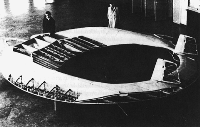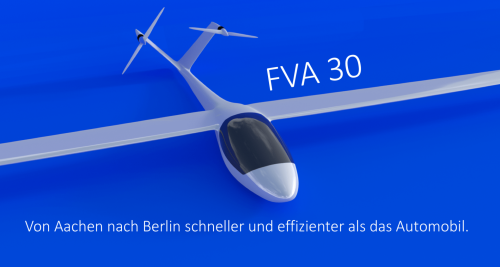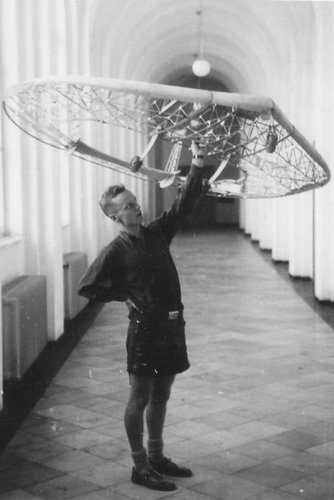- Joined
- 26 May 2006
- Messages
- 34,932
- Reaction score
- 15,800
Hi,
the Flugwissenschaftliche Vereinigung Aachen established in 1920,continue to this days,the
first project after the WWII was is No.14;
FVA-14 Ring-wing light aircraft,The first project at the FVA after WWII was the FVA-14 Ringflügel, a disc / annular wing aircraft, construction of which began in 1952. Built to investigate the theoretical advantages of a ring wing the FVA-14 was first flown in scale model form, with some success, then wind tunnel tests revealed serious problems with stability which were insurmountable. Work was abandoned and the completed un-flown prototype was stored in a workshop at Aachen where it was broken up to make room for other work.
FVA-15 : this project was instigated to research the use of compressed air for creating control forces om glider wings. Developed by Dr.-Ing. H. Stein the system used air blown through slots over the upper surfaces of a wing to produce lift for control purposes. A Grunau Baby III was modified with roll control slits for testing, retaining normal aileron control for safety purposes. Blown compressed air control systems were found to be feasible, but require a high volume/mass flow air supply to be practical, ruling out their widespread use in gliders.
FVA-27 : Since the Wright brothers started flying at Kill Devil Hill aircraft designers have recognised that canard aircraft are intrinsically more efficient than conventional aircraft and can also have safety benefits. Students at the FVA have initiated a project to design and build a canard glider to meet standard class competition rules demonstrating significant performance gains over comparable standard class gliders. The FVA-27 is a canard glider constructed from CFK (Carbon-fibre/Kevlar) with a welded steel tube truss fuselage structure
(Photo via http://mmb-airtouch.bplaced.net/modelle/ringflo.html)
the Flugwissenschaftliche Vereinigung Aachen established in 1920,continue to this days,the
first project after the WWII was is No.14;
FVA-14 Ring-wing light aircraft,The first project at the FVA after WWII was the FVA-14 Ringflügel, a disc / annular wing aircraft, construction of which began in 1952. Built to investigate the theoretical advantages of a ring wing the FVA-14 was first flown in scale model form, with some success, then wind tunnel tests revealed serious problems with stability which were insurmountable. Work was abandoned and the completed un-flown prototype was stored in a workshop at Aachen where it was broken up to make room for other work.
FVA-15 : this project was instigated to research the use of compressed air for creating control forces om glider wings. Developed by Dr.-Ing. H. Stein the system used air blown through slots over the upper surfaces of a wing to produce lift for control purposes. A Grunau Baby III was modified with roll control slits for testing, retaining normal aileron control for safety purposes. Blown compressed air control systems were found to be feasible, but require a high volume/mass flow air supply to be practical, ruling out their widespread use in gliders.
FVA-27 : Since the Wright brothers started flying at Kill Devil Hill aircraft designers have recognised that canard aircraft are intrinsically more efficient than conventional aircraft and can also have safety benefits. Students at the FVA have initiated a project to design and build a canard glider to meet standard class competition rules demonstrating significant performance gains over comparable standard class gliders. The FVA-27 is a canard glider constructed from CFK (Carbon-fibre/Kevlar) with a welded steel tube truss fuselage structure
(Photo via http://mmb-airtouch.bplaced.net/modelle/ringflo.html)



